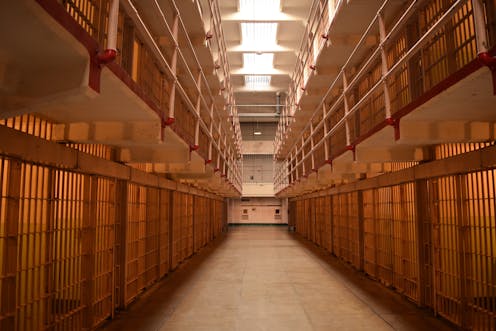Higher education in America's prisons: 4 essential reads
- Written by Jamaal Abdul-Alim, Education Editor, The Conversation

In 2020, I’m going to take you to prison. At least that’s my plan as education editor, since there’s a growing interest[1] among lawmakers and others in education behind bars.
As a former crime reporter, I have a keen interest in this topic. That’s because back when I was covering crime in my native Milwaukee in the 1990s and 2000s, I wrote quite a few articles about young men who turned to street crime[2] – and lost their lives[3] as a result. A common theme in their lives is that they didn’t do well in school[4].
Research shows that providing education to such young men – and young women – when they become incarcerated makes them less likely to return to prison. A number of scholars, including several who have written for the education section of The Conversation in 2019, have witnessed this firsthand.
1. The merits of second chances
Criminal justice professor Andrea Cantora[5] explains how her experience teaching behind bars has led her to believe in second chances[6].
“I know education can transform lives because I see it constantly in the incarcerated – and formerly incarcerated – people I’ve met,” Cantora writes.
2. Restoring student grants for those in prison
Cantora also makes a compelling case for why federal student aid should be restored for people in prison[7]. Among other things, she says doing so will lead to better employment prospects for those who are serving time, thus saving taxpayers money and making communities safer.
“People who participate in academic or vocational programs while in prison are more likely to find work when released,” Cantora writes. “They are also more likely to earn more.”
“I know education can transform lives because I see it constantly in the incarcerated – and formerly incarcerated – people I’ve met,” Cantora writes.
3. Need seen for state student aid
The federal government isn’t the only one restricting student financial aid for those who are serving time. As Bradley Custer[8], a a recent graduate of the higher, adult, and lifelong education PhD program at Michigan State University, discovered in his groundbreaking research, many states also hold back student financial aid[9] from those who are incarcerated.
While Congress continues to debate whether to restore federal student aid to prisoners, Custer suggests states lead the way and “unlock financial aid for people in prison.”
4. Taking a closer look
Finally, if you want an up-close look at prison education in action, be sure to check out “College Behind Bars,”[10] a documentary Emerson College political science professor Mneesha Gellman[11], who launched a prison education initiative herself, reviewed for The Conversation[12].
“In my experience – and based on what the research shows – correctional facilities are more effective when they provide education,” Gellman writes. “But it can’t be just any kind of education,” she continues in a piece that shows how students in her program are held to high standards just like they would be in college.
Editor’s note: This story is a roundup of articles from The Conversation’s archives.
References
- ^ growing interest (www.insidehighered.com)
- ^ young men who turned to street crime (www.wagc.com)
- ^ lost their lives (minds.wisconsin.edu)
- ^ didn’t do well in school (minds.wisconsin.edu)
- ^ Andrea Cantora (www.ubalt.edu)
- ^ believe in second chances (theconversation.com)
- ^ federal student aid should be restored for people in prison (theconversation.com)
- ^ Bradley Custer (scholar.google.com)
- ^ many states also hold back student financial aid (theconversation.com)
- ^ “College Behind Bars,” (www.pbs.org)
- ^ Mneesha Gellman (scholar.google.com)
- ^ reviewed for The Conversation (theconversation.com)
Authors: Jamaal Abdul-Alim, Education Editor, The Conversation
Read more http://theconversation.com/higher-education-in-americas-prisons-4-essential-reads-127676

